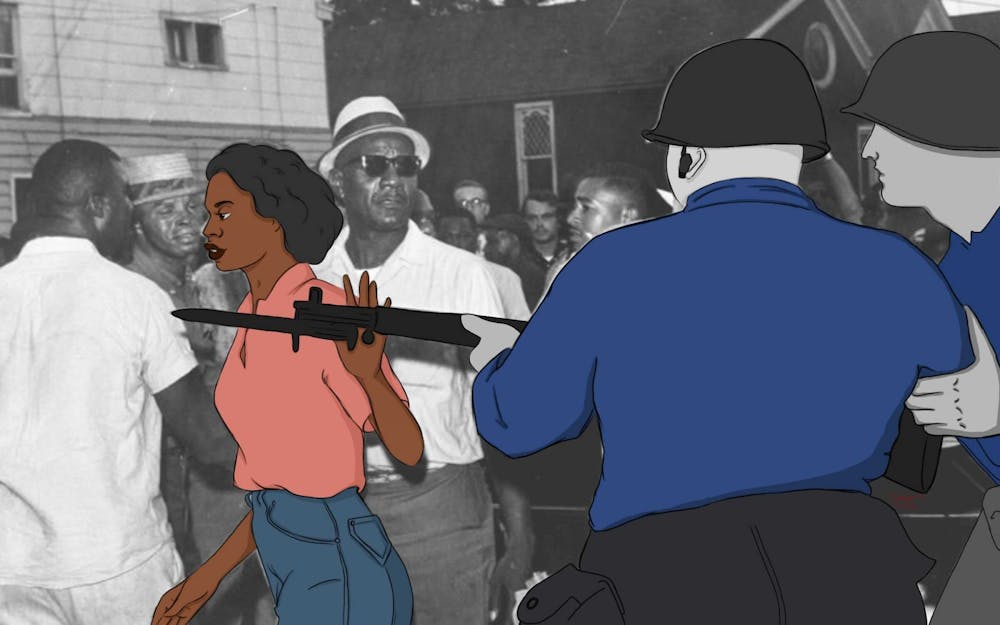In the summer of 1963 in Cambridge, Maryland, Gloria Richardson stood among a crowd of Black people as she pushed a National Guard’s bayonet out of the way and determinedly continued on her path.
“And I don’t even know why I pushed the gun, but I know I was furious at that time,” Richardson said in 2013 during an interview with Amy Goodman.
Richardson, former leader of The Cambridge Nonviolent Action Committee (CNAC), an organization founded in 1962 with the goal of desegregating and creating racial equality in Cambridge, died July 15 at the age of 99.
As there were many different Black leaders working together in order to achieve equality for the Black community, many people are not aware of who Richarson was and the pivotal role she played in the Civil Rights Movement.
She was born in Baltimore, Maryland in 1922, during The Great Depression. She later moved to Cambridge, where she would advocate for desegregation, better jobs, schools and health care for the Black community.
Richardson began advocating for racial equality when she was 16, at that age she also began college at Howard University, according to NPR. While a student, she began protesting for equal rights at a local drugstore in Washington D.C.
After receiving her bachelor’s degree in sociology, she worked for the federal government during World War II. She later returned to Cambridge, where she would lead the CNAC and advocate for economic justice, desegregation and racial equality.
Racism in Cambridge was different than in the deep South. The Black community could buy food from restaurants, yet could not sit down and eat in the restaurant. They could vote, but the area was still heavily segregated.
Richardson advocated for Black people to defend themselves if they were being threatened or attacked, which was seen as a more radical movement at the time.
She worked closely with Malcolm X and Martin Luther King Jr. serving as a bridge between the nonviolent movement King led and the Black Panther Party, according to the New York Times.
While she worked closely with the two and made contributions to the Civil Rights Movement, she underwent discrimination within the movement as a Black woman.
At the March on Washington in 1963, Richardson was allotted time to speak at the event, but she was only able to say “hello” before the microphone was taken away from her, according to an Associated Press article.
Shortly after the historical March on Washington, Richardson resigned from the CNAC. She then got married to her second husband Frank Dandrige and moved to New York.
Joseph R. Fitzgerald wrote a biography on Richardson in 2018 titled “The Struggle is Eternal: Gloria Richardson and Black Liberation.” In this book, he not only delves into Richardson’s life as the leader of the CNAC, social justice activist and a Black woman during that time, he compares the CNAC to the current Black Lives Matter Movement.
"Everything that the Black Lives Matter movement is working at right now is a continuation of what the Cambridge Movement was doing," Fitzgerald said in the NPR article.






